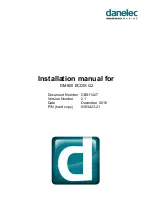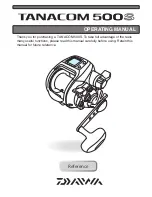
54
2049809-001 Rev B
© 2010 by General Electric Company. All rights reserved.
Appendix C
theoretically with accuracy. To assess the electromagnetic environment due to fixed RF transmitters, an
electromagnetic site survey should be considered. If the measured field strength in the location in which the
unit is used exceeds the applicable RF compliance level above, the unit should be observed to verify normal
operation. If abnormal performance is observed, additional measures may be necessary, such as re-orienting or
relocating the unit.
NOTE b:
Over the frequency range 150 KHz to 80 MHz field strengths should be less than 3 V/m.
Recommended separation distance between portable and mobile RF communications equipment and the
Mini Telemetry
The unit is intended for use in an electromagnetic environment in which radiated RF disturbances are
controlled. The customer or the user of the unit can help prevent electromagnetic interference by maintaining a
minimum distance between portable and mobile RF communica tions equipment (transmitters) and the unit as
recommended below, according to the maximum output power of the communications equipment.
Rated
maximum
output power
of transmitter
(W)
Separation distance in meters (m) according to frequency of transmitter
150 kHz to 80 MHz
P
2
.
1
d
=
80 MHz to 800 MHz
P
2
.
1
d
=
800 MHz to 2.5 GHz
P
2
.
1
d
=
0.01
0.12
0.12
0.23
0.1
0.38
0.38
0.73
1.0
1.2
1.2
2.3
10.0
3.8
3.8
7.3
100.0
12.0
12.0
23.0
For transmitters rated at a maximum output power not listed above, the recommended separation distance (
d
)
in meters (m) can be determined using the equation applicable to the frequency of the transmitter, where P is the
maximum output power rating of the transmitter in watts (W) according to the transmitter manufacturer.
NOTE: At 80 MHz and 800 MHz, the separation distance for the higher frequency range applies.
NOTE:
These guidelines may not apply in all situations. Electromagnetic propagation is affected by absorption
and reflection from structures, objects and people.




































